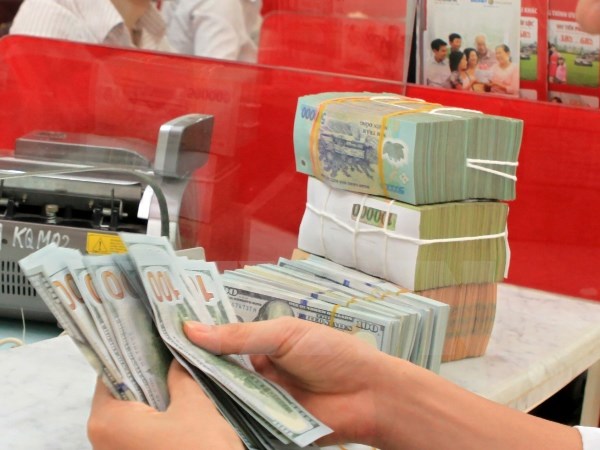
Specifically, on December 15, the SBV officially re-listed the buying rate for USD at 23,450 VND/USD. This is the first session after more than 2 months, the State Bank has just listed this exchange rate at the Exchange. Previously, the SBV stopped listing the buying rate for the greenback from the beginning of September.
Besides, from December 16, the SBV also sharply reduced the selling price of USD from 24,830 dong to 24,780 dong, a much stronger decrease than previous adjustments. In November, the State Bank had 4 times to reduce the selling price of USD, only 10 dong each time.
Previously, due to the strong greenback in the world, the pressure on the domestic exchange rate was so great that the State Bank had to sell foreign currency interventions since the beginning of the year and continuously increased the selling price of USD to a record level of 24,870 VND/USD. Foreign exchange reserves, according to ACB Securities (ACBS), fell by $22 billion to about $87 billion, equivalent to 12 weeks of imports.
Simultaneously, the State Bank of Vietnam has raised the operating interest rate twice in September and October, increasing 1% each time.
With more interventions and more favorable factors in recent times, the domestic exchange rate has cooled down significantly in December. Currently, the USD price listed at commercial banks has decreased by about 4.5%. compared with the peak at the end of October and only about 3.5% higher than the beginning of the year. According to many experts, the return of the VND to the expected annual devaluation shows that the “front” of the exchange rate is less hot, allowing the SBV to have more room in its operating policy in the coming time.
According to VCBS Securities, the buying price for spot USD at 23,450 VND/USD of the State Bank of Vietnam is significantly lower than the exchange rate being traded at commercial banks. This comes from the fact that foreign currency inflows into the market in this period have significantly improved compared to the beginning of November. Accordingly, the State Bank is showing confidence in foreign currency flows in the coming period along with the ability to purchase additional foreign exchange reserves, which has decreased sharply in the past period. Thus, in general, in the short term, there is quite a lot of supportive information for the financial market related to corporate bonds and exchange rates.
However, VCBS believes that it will still need to wait more before these measures bring into play qualitative changes, especially when the deposit interest rate race is still hot at many joint stock commercial banks. Small and medium-sized enterprises push the 6-month deposit interest rate to over 10%.
According to Rong Viet Securities (VDSC), the speculative sentiment to hold the exchange rate has decreased significantly, the main reason is that the competition in deposit interest rates among commercial banks has attracted depositors to transfer their savings save money in Dong. With a more abundant supply of foreign currency at the end of the year in terms of remittances, FDI disbursement, and trade balance surplus, the short-term trend is favoring the stability of the dong. With the restart of the foreign currency buying channel of the State Bank, VDSC also believes that this is a favorable time to re-store foreign exchange reserves after a period of sharp decline.
The recent macro update report of World Bank Vietnam also stated that the pressure on the Vietnamese currency has been eased. The World Bank recommends that, due to tight financial mobilization conditions globally and weak external demand, Vietnam’s monetary authority may consider allowing more flexibility in exchange rates in order to respond to demand and cope with external shocks. This policy can be supplemented by judicious use of the reference rate and prudent use of direct exchange rate intervention to protect foreign exchange reserves. Coordination of fiscal and monetary policies is an important condition to maintain price stability in the context of rising core inflation in the country.
In fact, according to experts, although there are signs of cooling down, the domestic exchange rate still cannot be subjective before the greenback’s unpredictable movements in the international market. In the past week (December 12-16), the VND/USD exchange rate also had many reversal sessions to increase/decrease with a fairly strong correction, with a range of hundreds of dong.
Specifically, after nearly 2 consecutive weeks of decline, at the beginning of this week’s session (December 12), the USD exchange rate at commercial banks suddenly turned to increase sharply by 150 dong. However, just in the next 3 sessions (December 13-15), the exchange rate reversed to decrease by 200 dong. At the last session of the week (December 16), the exchange rate reversed again, gaining about 100 dong.
Accordingly, at the end of this week, the USD price at banks was popular at 23,410-23,720 VND/USD. The “black market” USD price also dropped sharply to nearly 24,000 VND/USD.
Source: CafeF
Source: Vietnam Insider
